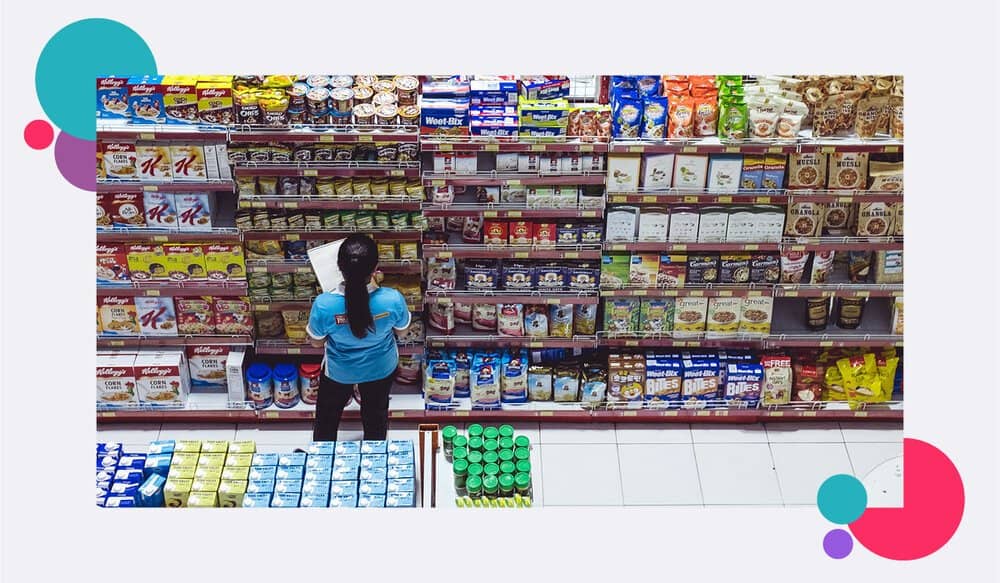
Many retail workers spend some or all of their time working alone. Our first thoughts might go to shop attendants working late-night shifts in garage forecourts or convenience shops –but there are many more examples. Supermarket delivery drivers often work alone, as do many non-grocery shop workers (fashion, home goods, etc.). Even people working at the distribution end may work alone for much of their time.
A lone worker is someone who works out of site or earshot of their colleagues for some or all of their day. Lone working, by its nature, can increase the risk of serious injury, by lowering levels of oversight, and increasing response times to potential emergencies.
In simple terms, if someone is working alone in a shop and they are attacked –or they slip and bang their head– its possible that no one will notice their injury until the end of their shift –or maybe even longer. Beyond this simple example, we can see how it might affect delivery drivers facing abuse, or warehouse workers being
Retail is the largest private sector in the UK –employing around 3 million people. In 2021, retail sales had a value of £465 billion.
From shift workers at huge chains like Tesco or Sainsburys, or sole traders operating from small shopfronts, retail is an incredibly varied sector. When we think of retail, it’s easy to forget that many of those working in retail often work alone.
Lone workers are a large part of the retail environment, whether it comes to working in an all-night garage, preparing deliveries in a warehouse, or delivering goods to retailers or for home delivery.
Employers and leaders in the retail sector have really clear and concrete responsibilities towards their lone workers and staff in general.
In this article we’ll look at some of the risks of the retail sector, particularly for lone workers, and what can be done to keep them safe.
Did you know that great names across retail and beyond use Safepoint to keep their lone workers safe?






Perhaps the most serious danger for retail workers is the risk of abuse and violence by the public. Indeed, the Scottish government created the “protection of worker act” in August 2021 in response to 15 retail workers being attacked every day in Scotland alone.
This is certainly not isolated to Scotland, however. And, while there was a peak of aggression and violence during the pandemic, the retail sector has continued to see high rates of aggression more recently due to the cost of living crisis, among other factors.
Lone workers in retail often handle desirable goods and cash, putting them at risk of theft and assault. Additionally, working with the public in any capacity, as retail staff do for much of their day, carries with it the potential for an incident.
Overview of risks in retail:
With all these risk factors –whether they be violence and aggression from customers, or simply accidental injuries like slipping on a wet floor– the danger is made worse if the victim is working alone. As mentioned at the start of this article, working alone can decrease levels of supervision and increase response times in the case of an emergency.
What’s more, it’s important to remember that someone can be classified as a ‘lone worker’ even if there are other staff members on-site. This is particularly important when working on large sites like distribution hubs, where injuries in remote corners can go unnoticed for some time.
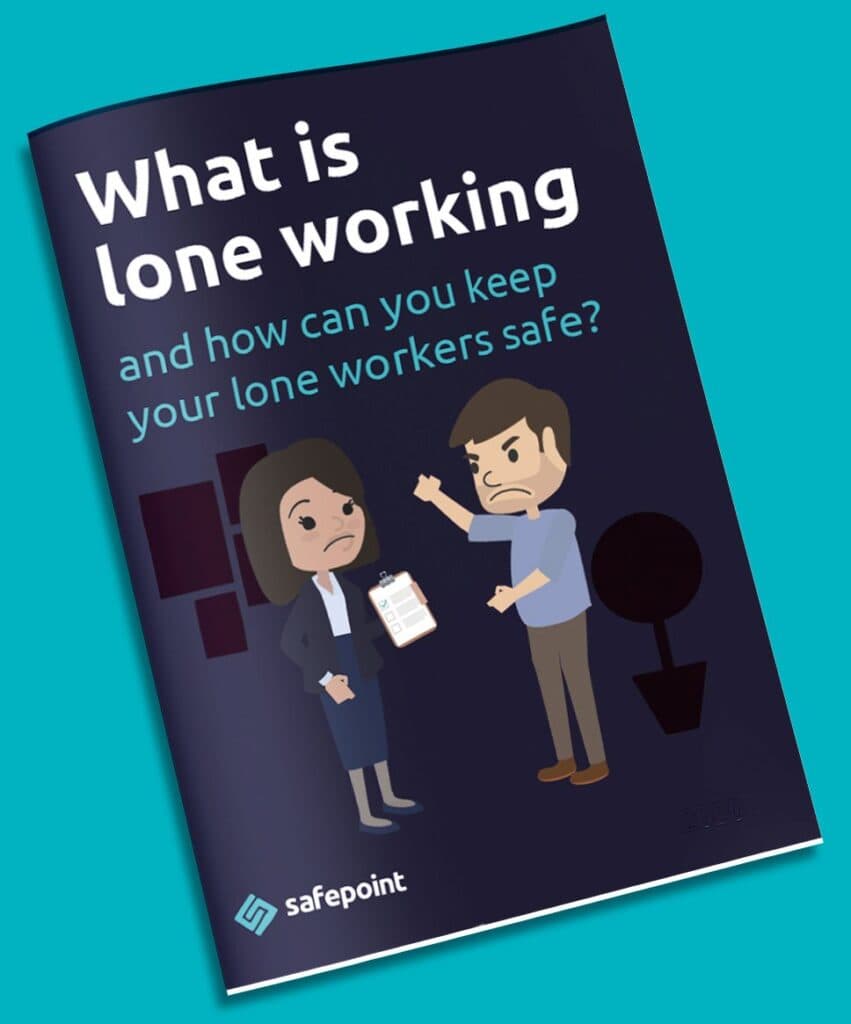
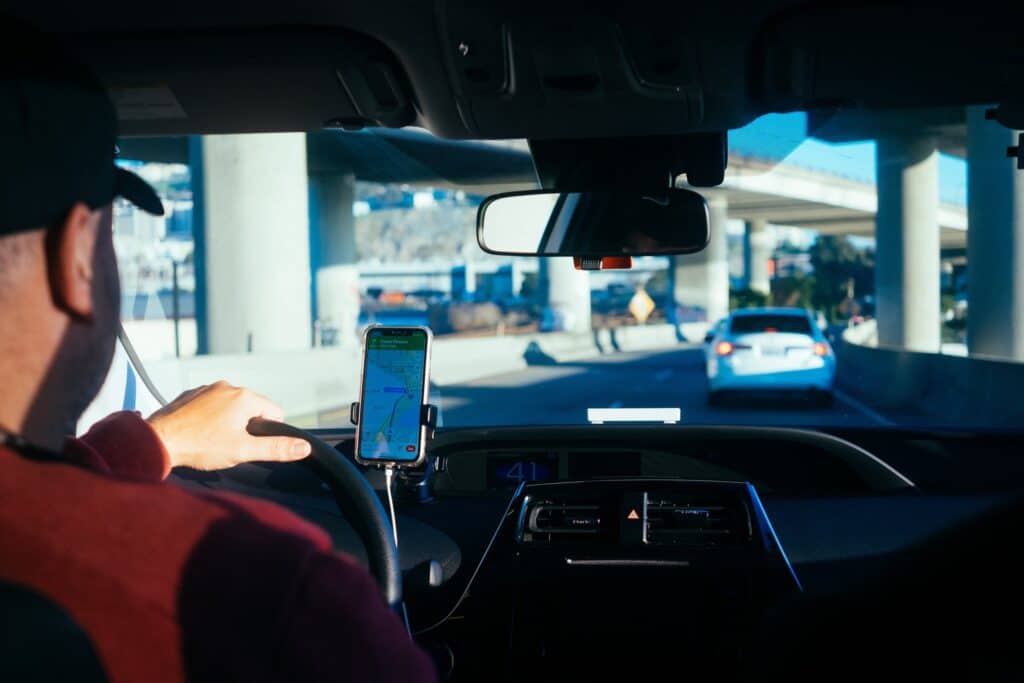
Organisations have a duty of care for all their staff. This includes a responsibility to identify and safeguard their lone workers.
Lone working in retail has been around for a long time and, while there may be opportunities for more work to be handled in pairs or as a group, there are obvious limits to this. Instead, employers will need to find different ways to protect and supervise lone workers, in order to meet their responsibilities.
In fixed retail locations, employers also have a responsibility to deter acts of theft, aggression or violence from the public and create a working environment that is conducive to keeping lone workers safe on the job.
Failure to adequately protect lone working retail employees either on or off your premises can result in severe penalties. Beyond the moral cost of an accident or incident of theft or violence, large fines, damage to your reputation and even criminal charges can result from a failure to uphold these responsibilities.
With such a varied assortment of lone working roles and working locations, retail organisations need a practical, thorough approach to employee safeguarding.
Your shop should already have an up to date risk assessment, detailing potential hazards and what should be done to address them. We’d always recommend talking to your employees when updating a risk assessment, as they can have valuable input on this topic.
The next step should be considering what risks are specific to your lone workers. These risks may be different depending on the role at hand. In-store roles will differ from delivery driver roles and warehouse roles. In each case you should consider what risks can affect lone workers in these positions, and then build those into your risk assessments.
Be sure to provide a lone working policy that staff across your organisation have access to. Everyone from warehouse workers to sales staff needs to understand their rights, and liabilities, and have a set of best practices and rules to follow.
Conduct training to help prepare lone workers across your retail organisation for the risks and difficulties they might face while working alone, particularly when interacting with the public. It is important to give lone workers the tools and training they need to avoid dangerous situations, handle hazards and threats, and be able to call for help.
Some retail organisations have provided their staff with de-escalation training, others have trained their staff what to do in an emergency if no one is around. Most stores will have a training policy for if there is violence or theft. The main focus, in all these cases, should be the employee’s safety.
Finally, if your retail staff work alone, you will need to provide a way for them to call for help, should anything go wrong.
Unfortunately, low-fi solutions, such as yelling out, or using a walkie-talkie or mobile phone, present many problems (which we discuss in this helpful article). The worker might be busy dealing with an aggressive customer or they may be incapacitated.
Luckily, Safepoint provides an affordable yet robust, automated lone worker solution that doesn’t rely on manual interventions from the worker.
That’s why we suggest using Safepoint’s automatic alert system to protect your lone working staff. With it’s automatic time-out and fall-detection alarms –as well as it’s subtle panic alarm features– it can provide a valuable lifeline for lone working retail workers.
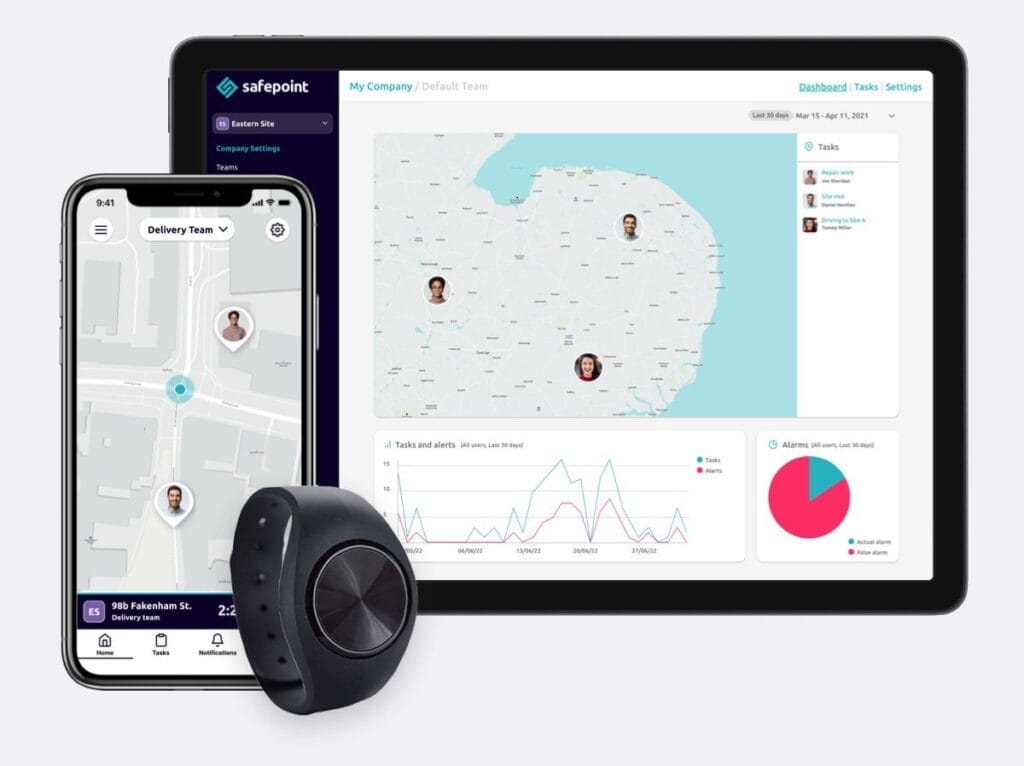
Safepoint provides award-winning lone working solutions for shop workers and those in the retail sector along with many other industries across the UK and abroad.
When shop workers, petrol attendants, delivery drivers and other staff are equipped with Safepoint’s apps and wearable panic alarms, they can set up timed, GPS-tracked ‘tasks’ (such as ‘delivering to Castle Road – 30 mins’).
If the worker runs into trouble, they can tap a button on their phone or wearable alert button and an alert will be sent out (along with their live location). An alert will also automatically be sent out if a user takes a fall or is unresponsive.
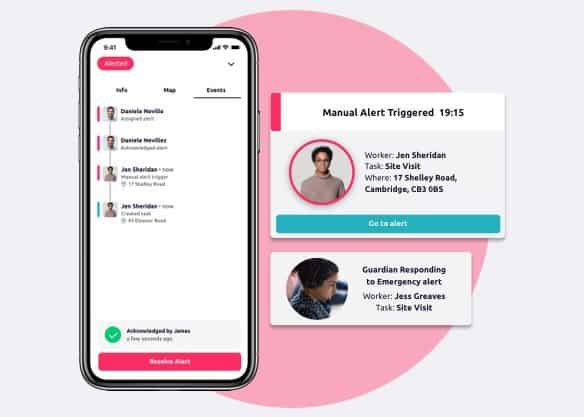
Above: when an alert is triggered, it is handled by our GuardianPlus team and can be viewed in the web portal.
What’s more, with Safepoint’s 24/7 GuardianPlus service, your team’s safety can be monitored day and night by an accredited team of expert responders. These emergency response professionals, working out of a dedicated Alarm Receiving Centre, will handle any emergency –from first response to escalation management to liaising with the emergency services.
Safepoint is not just for emergencies! With Safepoint’s staff management features, you can organise and oversee your whole staff, right from your smartphone. Simply open your app and see your entire team on our live map.
Want users to start a live 30-minute timer whenever they go into the deep freezer? Or maybe you want to see who’s out for deliveries, who’s collecting trollies or how many people are on the shop floor. It’s all easy with Safepoint’s easy-to-use app.
Award-winning safety management tools and a fully accredited response team.